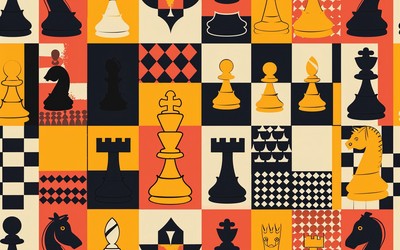
Spence and Lieknieks
Reviewing My Games From A 15-minute Tournament
Key moments from an OTB tournamentWith only a few weeks to go before my first OTB classical tournament in over a year, I decided to get a little warmup by playing in a small tournament at the Spence Chess Club here in Omaha.
The time control for this event was 15 minutes with a 5 second delay – pretty fast, but it gave me a chance to get the feeling of sitting in front of a chessboard. My opponents ranged from around 1300 to 1900 in rating, a wide range that encompasses a lot of Zwischenzug readers, so I thought it might be interesting to review the games.
What were the key factors that decided the games? What changes as you go from 1300 to 1900? What can you do to induce mistakes from opponents at each level?
I wrote down a few key points for each game and did a video with more detailed analysis.
Game 1 vs. Allen (1300)
This game really came down to opening principles. My opponent tried to attack with just a few pieces without developing the rest of his army. When those pieces got traded, he was left with undeveloped pieces and a king in the center, and soon fell victim to a tactic.
Game 2 vs. Chad (1600)
This was somewhat similar to the first game in that my opponent was forcing the action with aggressive play, but in a way that ultimately rebounded back on him. In this case though the key moment came in the middlegame. He played a pawn move that attacked my bishop, but created a long-term weakness in his position. I was able to answer the threat by simply retreating my bishop, but the weakness he created came back to haunt him.
Game 3 vs. Steven (1900)
This game saw a bit more of a theoretical battle in the opening. We followed a famous game Anand-Maghsoodloo up to move 13. I had watched a Danny King video about this game so I had some ideas about what was going on (although to be honest my memory was pretty fuzzy). Unfortunately for my opponent, he knew just enough to get into a very tense position, and in trying to navigate the complexities he lost track of a central pawn. With an extra pawn and central domination, I just had to avoid any big mistakes to guide the game to a win.
Game 4 vs. Abhinav (1900)
This game was also largely decided in the opening. My opponent missed a pawn advance that trapped his bishop. This was definitely an uncharacteristic blunder for a 1900 player. It could be that my unorthodox opening starting with 1. Nf3 threw my opponent off. This is pretty much the whole idea of my Chessable course! I didn’t convert the game in the most confident way, but with an extra piece I just needed to avoid any big mistakes.
Conclusion
If you want to review the games you can find them in this Lichess study.
I was recently listening to a personal finance podcast and heard a piece of advice attributed to Charlie Munger, the right hand man of legendary investor Warren Buffett (who supposedly lives kind of near me in Omaha). Munger recommends a technique called inversion. Instead of trying to come up with brilliant ideas to make money, focus on avoiding the most common reasons people fail to make money: taking on excessive debt, going for unnecessarily risky gambles, and so on. It struck me that I was able to win the games in this tournament not because I did anything special, but because I was able to avoid certain mistakes more often than my opponents:
- Attacking without first developing my pieces.
- Creating unnecessary weaknesses in my own position.
- Allowing 2-3 move tactics that cost me material.
Even the best players produce brilliant games only occasionally, but if you can avoid the most common types of mistakes, that’s enough to win a lot of games.
If you liked this check out my newsletter where I write weekly posts about chess, learning, and data: https://zwischenzug.substack.com/




